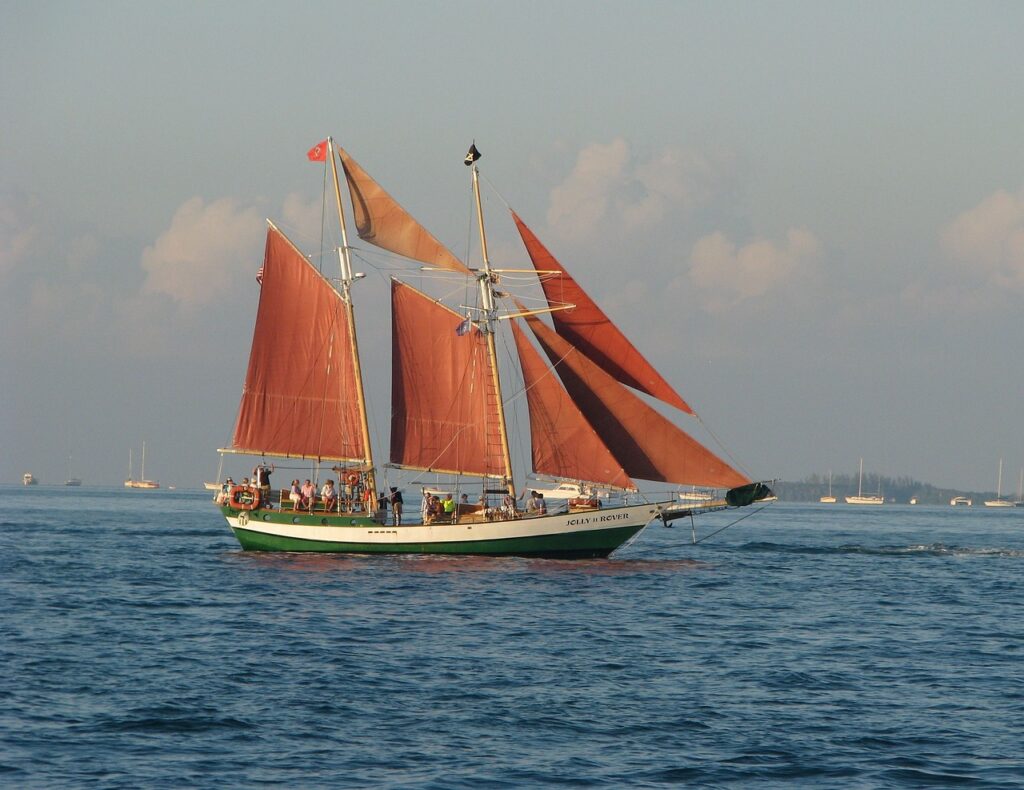The legacy of Schooner

Sailing vessels have long captured the imagination of adventurers, merchants, and explorers alike. Among the diverse array of sailing ships, the schooner stands out with its distinctive design and remarkable history. Here, we embark on a journey through time to explore the evolution, significance, and enduring legacy of schooner type vessels.
The origins of the schooner can be traced back to the early 18th century, emerging as a response to the need for faster and more maneuverable vessels. Developed primarily in North America, schooners quickly gained popularity due to their versatility and efficiency. Unlike earlier square-rigged ships, schooners featured fore-and-aft sails, which allowed for greater maneuverability and sailing closer to the wind.
Over the centuries, schooner design underwent significant evolution to suit various purposes and navigate diverse waters. Initially used for coastal trading and fishing, schooners gradually expanded their reach into deep-sea voyages and even military applications. Their design evolved to incorporate multiple masts, ranging from two to seven, each carrying a specific combination of sails to optimize performance under different wind conditions.
The 19th century marked the golden age of schooners, as they became synonymous with speed, elegance, and maritime prowess. Schooners played a vital role in trade, exploration, and even smuggling during this period. Their sleek hulls and towering masts graced the seas, carrying goods, immigrants, and adventurers to distant shores. Iconic vessels like the Bluenose and the America’s Cup-winning yacht America captured the world’s imagination and solidified the schooner’s place in maritime history.
Schooners played a crucial role in numerous expeditions of exploration and discovery. From the Arctic to the Antarctic, schooners ventured into uncharted waters, carrying intrepid explorers like Roald Amundsen and Ernest Shackleton on their quests for knowledge and adventure. Their agility and maneuverability made them ideal vessels for navigating treacherous ice floes and unpredictable seas, earning them a reputation as reliable companions in the face of adversity.
Despite their storied past, schooners faced a decline in the early 20th century with the advent of steam-powered ships and modern sailing yachts. Many were relegated to obscurity or repurposed for other uses such as fishing or coastal trade. However, the spirit of the schooner endured, fueled by a passionate community of sailors, historians, and preservationists determined to keep their legacy alive.
In recent decades, there has been a resurgence of interest in schooners, driven by a renewed appreciation for their beauty, craftsmanship, and historical significance. Restorations and replicas of classic schooners have graced the seas once again, offering enthusiasts the chance to experience the thrill of sailing aboard these majestic vessels.
The legacy of schooners extends far beyond their graceful lines and sturdy hulls. They symbolize the spirit of exploration, adventure, and innovation that has shaped maritime history. From the bustling ports of New England to the remote islands of the Pacific, schooners have left an indelible mark on the landscape and culture of coastal communities around the world.
Schooner type vessels occupy a unique place in maritime history, embodying the ingenuity, resilience, and spirit of exploration that define the human experience. From their humble beginnings as coastal traders to their iconic status as symbols of adventure and freedom, schooners continue to inspire awe and admiration in sailors and enthusiasts alike. As we navigate the seas of time, let us remember the timeless legacy of the schooner and the countless stories of adventure and discovery they carry on their graceful wings.